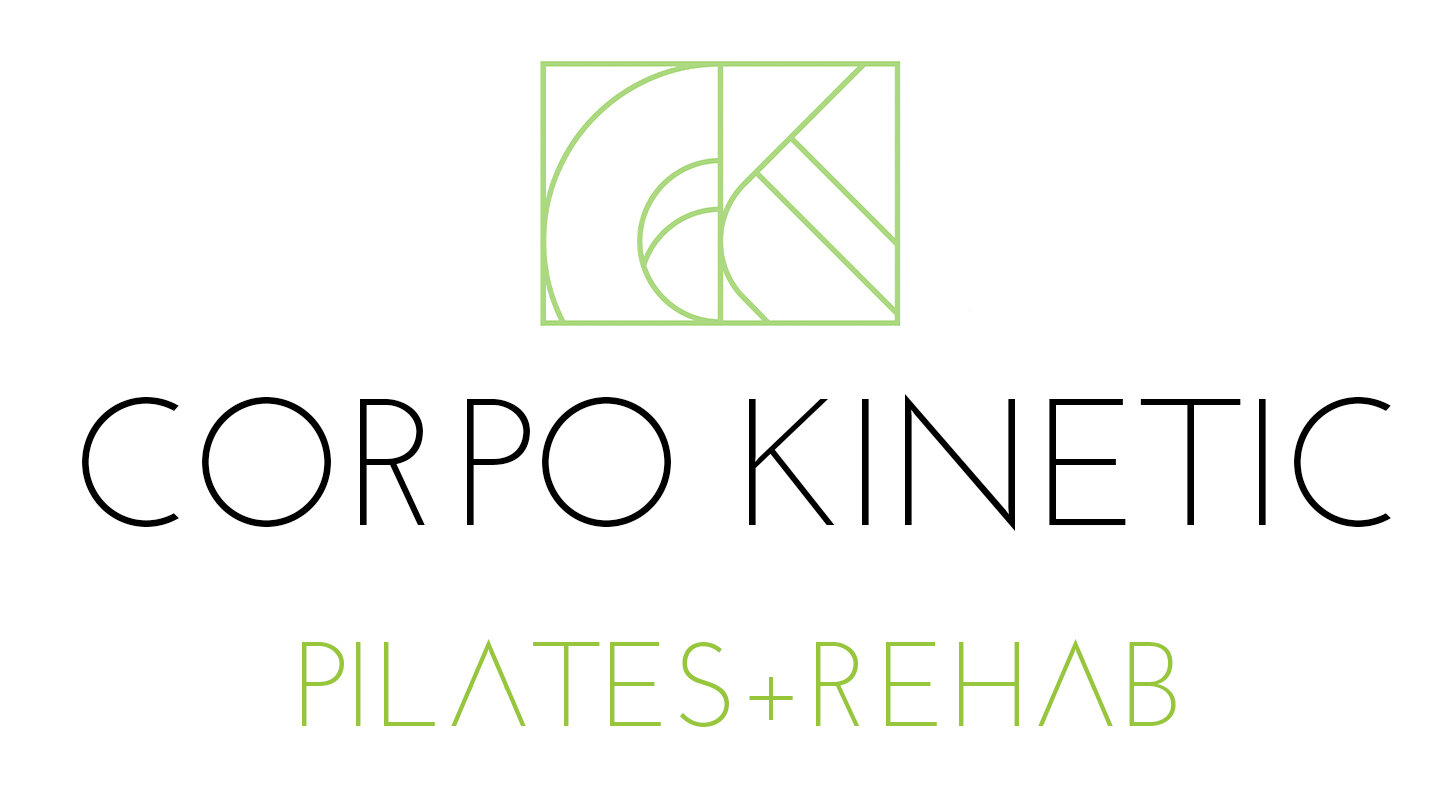What’s A Neutral Pelvis? (And Why It Matters)
If you’ve ever taken a Pilates class before, you’ve probably heard the instructor refer to a “neutral pelvis.” In this blog, we’ll explore what we mean by a neutral pelvis, why we focus on it in Pilates, and how to understand what’s happening in your own pelvic alignment.
First, what is the pelvis?
The pelvis is the basin-shaped complex of bones that connects the upper body to the lower body. It consists of a variety of bones, including the Sacrum, Ilum, Ischium, and Pubis - see image. In addition to connecting our torso to our legs it contains and supports the intestines, the urinary bladder, and the internal sex organs.
As the connection between the upper body and the lower body, misalignments and imbalances in the pelvis affect our entire body, which is why we focus on it so heavily in Pilates.
What is a neutral pelvis?
First and foremost it’s important to note that every body is different, and thus every pelvis has its own neutral alignment because no two humans’ bones are exactly the same. In general, a neutral pelvis is the place which supports the most freedom of motion in our hips and spine, without putting undue load on our joints, vertebrae, or discs. A neutral pelvis is often the cornerstone of healthy hips and a happy back! When we start in neutral we have ability to move in any direction with ease.
Why do we care about a neutral pelvis?
When the pelvis is in a neutral position, our body is able to fire a 360 degree support system for our low back and pelvis. This consists of the pelvic floor, the deepest layer of abdominals (transverse abdominals), and the deep back extensors (multifidi). When all of these muscles fire up simultaneously it protects our spine as we mov e throughout our life, whether participating in rigorous activity or sitting and working on a computer.
The pelvis can come out of alignment in a variety of ways, we’ll discuss the most common ways (though there’s a lot more complexity that we don’t have space to explore in this blog). It can tilt forward (aka anterior tilt) causing an exaggerated arch in the lower back or it can tilt back (aka posterior tilt) flattening the natural curvature of the low back. It can also tilt sideways, causing one side to be higher than the other, or be rotated, causing your pelvis topoint more to one side. Knowing where your pelvis is and how to bring it to a more neutral alignment is key to developing a strong and healthy core!
Get to Know Your Pelvis
In Pilates class, you’ll do exercises in a variety of positions such as sitting, standing, and laying on your back. Knowing how to find your neutral pelvis in any position will help you know you’re strengthening in good alignment, protecting your lower back, and getting the maximum bang for your buck. We can’t tell you how many times a small adjustment in alignment results in our clients feeling the exercise more intensely! Get to know your pelvic alignment in standing, sitting, and lying on your back (supine), and you’ll definitely feel the difference in class.
STANDING
Place one hand on your lower abs and the other on your sacrum
Let the low belly relax into your hand & pelvis tip forward (the hip crease should deepen and the arch in your low back should grow)
Engage your low abs, drawing them up towards your ribcage as your sacrum drops down towards the floor (the hip crease should decrease and the low back lengthens)
Repeat a few times
Find a position where you feel like both your hands are relatively straight up and down, parallel to the walls and the front of the hip crease is more open
Bonus: Can you keep a neutral pelvis as you move your arms? What about if you add hand weights? What if you stand on one leg? If so, you’re strengthening in a good standing alignment!
SITTING
At the base of our pelvis, we have two bony landmarks (the sitz bones) which you may be able to feel when sitting on a hard surface. When we are sitting in a neutral pelvis, these two sitz bones are pointing straight down, and the pressure is on the middle of the sitz bones - not the front nor the back of them.
Sit on a chair and place one hand on your lower abs and the other on your sacrum
Tip forward on your pelvis, letting the low belly protrude into your hand. The sitz bones are now pointing back, away from the knees and slightly towards the back of the chair.
Tip your pelvis backwards, letting the sacrum roll back into your hand, and the lower back round. The sitz bones are now pointing forward, towards the back of the knees.
Repeat a few times
Find the spot where the sitz bones are pointing straight down to the chair (just like in standing, this should feel like both hands are relatively straight up and down, parallel to the walls)
Bonus: Can you find a neutral sitting on the floor, with your legs out in front of you? If that’s challenging - or even impossible! -let you instructor know and they’ll suggest an adjustment or a prop to get you back to neutral. !
SUPINE
Make a diamond with your hands, bringing the thumbs together and the index fingers together.
Place the heels of your hands on your hips bones and your fingertips on your pubic bone, in between your legs.
*before you move* notice, is the diamond leaning more towards your belly button or public bone? More towards your right or left? Or - does it feel pretty even?
Pull the low abs in and roll your hip bones towards your ribs, letting the low back sink into the mat. The diamond is now tilting towards your belly button.
Roll the hip bones towards your legs, tipping the pubic bone towards the mat, and creating space between the low back and the mat. The diamond is now tilting towards your public bone.
Find the spot where your diamond feels parallel to the ground, pause there
What if I feel a tilt to one side - the right or left?
With your diamond centered between pubic bone and belly button, imagine a marble on the diamond
Roll the marble towards your right hip (keep the knees pointing to the sky) and then to the left
Stop when you feel centered (the marble wouldn’t roll in either direction and there’s even weight on both hips)
Bonus: Can you keep your neutral pelvis stable as you let one knee roll out to the side? As you lift one leg up to table top (knee bent)? If you straighten your leg up to the ceiling, how far can you go without flattening your lower back into the mat, losing that neutral pelvis? If you have tight hamstrings (muscles on the backs of your thighs), your leg might not get all the way straight - and learning how far you can go without moving your pelvis out of neutral will be key to avoiding strain on the low back as you attempt to stretch those hamstrings.
This is just the beginning of understanding your pelvis and its tendencies. Come to class to gain a deeper understanding and to practice strengthening in your neutral pelvis!
Let’s Move!
Book a group class or private session to use what you’ve learned:


